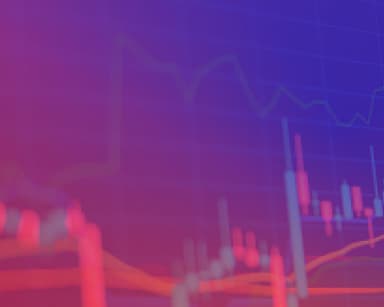
Reserve Bank of Australia meeting
When is the next Reserve Bank of Australia meeting and how can you trade it?
Learn everything you need to know about the Australian central bank, or open your City Index account to trade the next meeting now.
- How to trade Reserve Bank of Australia meetings
- When does the Reserve Bank of Australia next meet?
- What is the Reserve Bank of Australia?
- What does the Australian central bank do?
- What is the Reserve Bank of Australia’s cash rate?
- What is the current Reserve Bank of Australia interest rate?
- How does the RBA interest rate affect inflation?
- Are the Reserve Bank of Australia minutes important?
- Reserve Bank of Australia FAQ
How to trade Reserve Bank of Australia meetings
When the Reserve Bank of Australia meets to discuss monetary policy – such as changes to interest rates – it can cause volatility across Australian assets.
Most traders attempt to predict the outcome of RBA meetings using statements and previous outlooks, so that they can adjust their positions or try to profit from any subsequent price movements.
For example, when the central bank of Australia increases rates, the value of the Aussie dollar (AUD) could rise and cause securities to fall in value. Speculators may enter long positions on AUD, and short equities. If the RBA decreases rates, the value of AUD may fall and securities could rise – causing speculators to sell AUD and buy equities.
A lot of Australian markets see volatility around Australian central bank meetings, some of the most traded assets are:
When does the Reserve Bank of Australia next meet?
The Reserve Bank of Australia board meets 11 times a year on the first Tuesday of every month, except January.
The Reserve Bank of Australia also publishes the minutes of its monetary policy meetings, usually two weeks after the interest rate decision is announced. These can provide additional insights into economic conditions and growth outlooks.
It’s important to keep up to date on RBA meeting dates, minutes and statement releases so that you can identify opportunities and minimise any risk to open positions.
Reserve Bank of Australia calendar 2024
| Event | Date | Time (AEDT) |
|---|---|---|
| Monetary Policy Decision | 6 February | 2:30pm |
| Statement on Monetary Policy | 6 February | 2:30pm |
| Minutes of Monetary Policy Meeting | 20 February | 11:30am |
| Monetary Policy Decision | 19 March | 2:30pm |
| Minutes of Monetary Policy Meeting | 2 April | 11:30am |
| Monetary Policy Decision | 7 May | 2:30pm |
| Minutes of Monetary Policy Meeting | 21 May | 11:30am |
| Monetary Policy Decision | 18 June | 2:30pm |
| Statement on Monetary Policy | 18 June | 11:30am |
| Minutes of Monetary Policy Meeting | 2 July | 11:30am |
| Monetary Policy Decision | 6 August | 2:30pm |
| Minutes of Monetary Policy Meeting | 20 August | 11:30am |
| Monetary Policy Decision | 24 September | 2:30pm |
| Minutes of Monetary Policy Meeting | 8 October | 11:30am |
| Monetary Policy Decision | 5 November | 2:30pm |
| Statement on Monetary Policy | 5 November | 2:30pm |
| Minutes of Monetary Policy Meeting | 19 November | 11:30am |
| Monetary Policy Decision | 10 December | 2:30pm |
| Minutes of Monetary Policy Meeting | 24 December | 11:30am |
What is the Reserve Bank of Australia?
The Reserve Bank of Australia (RBA) is the central bank of Australia. It provides certain banking services to the Australian government and its agencies, as well as managing the country’s monetary policy, gold and foreign exchange reserves.
The RBA has the same function as other central banks, such as the Federal Reserve System in the US, the Bank of England in the UK and the European Central Bank.
What does the Australian central bank do?
The Reserve Bank of Australia works to ensure the stability of the country’s currency – the Australian dollar – full employment and the economic prosperity and welfare of the Australian people.
It does this primarily by changing its monetary policy to meet a set medium-term inflation target. The tools the RBA has at its disposal include the cash rate (interest rate), buying bonds and securities and issuing the nation's banknotes.
The RBA is divided into two boards:
- The Reserve Bank Board, which is responsible for monetary policy and financial stability – this is the main board of interest to traders
- The Payments System Board, which is responsible for matters relating to payments system policy, including controlling risk and promoting competition
What is the Reserve Bank of Australia’s cash rate?
The Reserve Bank of Australia’s cash rate is the country’s benchmark interest rate. The RBA sets the cash rate every month, which affects the cost of borrowing for commercial banks, and in turn, influences the interest rates they charge to consumers and businesses.
The cash rate is set to create monetary stability, which the RBA defines as an inflation rate of between 2-3% per annum.
What is the current Reserve Bank of Australia interest rate?
The current Reserve Bank of Australia interest rate (cash rate) is 3.1%, which was set on 6 December 2022. It marked the eighth consecutive increase from the RBA and the highest rate since 2012.
The rate increase is an attempt to curb inflation in the country, which was sat at 6.9% at the time of the decision. The economic conditions were brought on by excessive government spending during the pandemic, as well as the rise in energy prices that followed the Russian invasion of Ukraine.
It’s likely that the Australian central bank cash rate will increase further. The size and timing of future rate rises will depend on the economic conditions in the year ahead.
How does the RBA interest rate affect inflation?
The Australian central bank cash rate decision will trickle down through the economy and impact how money is borrowed and spent, which can cause changes to inflation levels.
When the cash rate is low, it makes interest payments on loans cheaper for individuals, and decreases the amount of interest earned on a savings account. This makes it less rewarding to save and encourages spending, which drives prices up. With prices high, the Australian dollar is worth less (as you can buy less with a single AUD), meaning inflation is on the rise.
If there are high cash rates, the opposite happens. Spending is discouraged as the interest earned in savings accounts promotes saving and a risk-off attitude. This lowers prices and causes AUD to rise. If the Reserve Bank of Australia believes inflation levels need to be decreased, it will increase the cash rate, and if it wants to boost economic growth, it will lower the cash rate.
But the RBA needs to consider the AUD exchange rate to other global currencies because that can impact inflation too. For example, if AUD falls against other currencies, it can cause the price of exports to fall. This makes Australian-produced goods and services cheaper when compared with goods and services produced overseas.
At the same time, it means that imported goods and services become more expensive for Australian consumers. If price inflation rises too far, residents may have to change their buying habits. This would lead the RBA to consider increasing the cash rate to keep inflation in check.
Are the Reserve Bank of Australia minutes important?
The RBA meeting minutes are important. Although markets will already have adjusted to the new rate that was announced two weeks previously, the minutes can help shed light on the decisions behind monetary policy changes and any economic conditions that influenced the decision.
They can also give traders insights into the leanings of the board. If discussions show a particularly hawkish attitude, it’s likely that rates could rise and create a positive attitude toward AUD over the long term, and vice versa if the minutes reveal dovish conversations.
Latest RBA news
RBA monetary policy decision calendar 2024
06 February
20 February
19 March
02 April
07 May
21 May
18 June
02 July
06 August
20 August
24 September
08 October
05 November
19 November
10 December
24 December
Over one million account holders* use us to trade the financial markets. Here's why.
*StoneX retail trading live and demo accounts globally in the last 2 years.
Reserve Bank of Australia FAQ
How much money does the Reserve Bank of Australia have?
The Reserve Bank of Australia reported an accounting loss of nearly $37 billion for the 2021-2022 year. It had valuation losses of $44.9 billion, caused by a decline in its assets held, which was partially offset by underlying earnings of $8.2 billion from interest earned.
Learn what revenue is.
Who is the governor of the Reserve Bank of Australia?
The governor of the Reserve Bank of Australia is currently Philip Lowe. He succeeded Glenn Stevens in 2016, and will remain in the position for a tenure of seven years until 2023.
Who owns the Reserve Bank of Australia?
The Reserve Bank of Australia is wholly owned by the government of the Commonwealth of Australia. It’s not ‘owned’ by a single body.
Read the latest news on the RBA.
What is the role of the Reserve Bank of Australia?
The role of the Reserve Bank of Australia is set out in the Reserve Bank Act 1959. It states that the Bank is responsible for formulating and implementing monetary policy to ensure a low and stable rate of inflation.
Where is the Australian central bank?
The Reserve Bank of Australia is primarily located at its headquarters in Sydney, Australia. But it has overseas locations in Beijing, London and New York, as well as smaller offices in regions throughout Australia.
Where does the Reserve Bank of Australia get its money?
The Reserve Bank of Australia gets its money from two sources: underlying earnings from net interest and fee income and valuation gains from assets held in reserve.
The Reserve Bank of Australia doesn’t necessarily make a profit from these segments, as any unrealised gains are not available for distribution and are transferred to the unrealised profits reserve.
Discover what currency reserves are.
If you have more questions visit the FAQ section or start a chat with our support.


